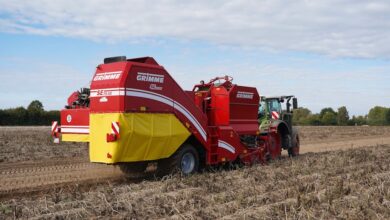The Compact Powerhouse: Qwen3-VL 4B/8B Models

In the rapidly evolving landscape of artificial intelligence, the quest for more powerful models often clashes with the practical demands of deployment and resource efficiency. Developers and businesses frequently face a dilemma: leverage large, resource-intensive models or compromise on capabilities for the sake of accessibility. Alibaba’s Qwen team, a prominent innovator in AI research, is addressing this challenge head-on with its latest release.
Do you actually need a giant VLM when dense Qwen3-VL 4B/8B (Instruct/Thinking) with FP8 runs in low VRAM yet retains 256K→1M context and the full capability surface? Alibaba’s Qwen team has expanded its multimodal lineup with dense Qwen3-VL models at 4B and 8B scales, each shipping in two task profiles—Instruct and Thinking—plus FP8-quantized checkpoints for low-VRAM deployment. This strategic move aims to bring high-performance multimodal AI within reach for a broader range of applications and budgets.
The Compact Powerhouse: Qwen3-VL 4B/8B Models
The drop arrives as a smaller, edge-friendly complement to the previously released 30B (MoE) and 235B (MoE) tiers and keeps the same capability surface: image/video understanding, OCR, spatial grounding, and GUI/agent control. This is a significant development for those looking to deploy advanced AI without the prohibitive hardware requirements typically associated with such sophisticated models.
The new additions comprise four dense models—Qwen3-VL-4B and Qwen3-VL-8B, each in Instruct and Thinking editions—alongside FP8 versions of the 4B/8B Instruct and Thinking checkpoints. The official announcement explicitly frames these as “compact, dense” models with lower VRAM usage and full Qwen3-VL capabilities retained. The model cards report Qwen3-VL-4B at approximately 4.83 billion parameters and Qwen3-VL-8B-Instruct at around 8.77 billion parameters, offering substantial power in a smaller footprint.
These compact Qwen3-VL models don’t just shrink in size; they maintain impressive functionality. The model cards list native 256K context with expandability to 1M, and document the full feature set: long-document and video comprehension, 32-language OCR, 2D/3D spatial grounding, visual coding, and agentic GUI control on desktop and mobile. These attributes carry over to the new 4B/8B SKUs, ensuring that developers aren’t sacrificing key functionalities.
Under the Hood: Architectural Continuity
Qwen3-VL highlights three core updates that are retained across these smaller scales: Interleaved-MRoPE for robust positional encoding over time/width/height (long-horizon video), DeepStack for fusing multi-level ViT features and sharpening image–text alignment, and Text–Timestamp Alignment beyond T-RoPE for event localization in video. These design details appear in the new cards as well, signaling architectural continuity across sizes. The project timeline indicates the publication of Qwen3-VL-4B (Instruct/Thinking) and Qwen3-VL-8B (Instruct/Thinking) on Oct 15, 2025, following earlier releases of the 30B MoE tier and organization-wide FP8 availability.
FP8 Checkpoints: Bridging the Gap to Practical Deployment
One of the most impactful aspects of this release is the inclusion of FP8 checkpoints. For many, integrating advanced AI into existing systems is often hampered by memory constraints. The FP8 repositories state fine-grained FP8 quantization with block size 128, with performance metrics nearly identical to the original BF16 checkpoints. This means developers can achieve significant VRAM savings without a noticeable drop in performance.
For teams evaluating precision trade-offs on multimodal stacks (vision encoders, cross-modal fusion, long-context attention), having vendor-produced FP8 weights reduces re-quantization and re-validation burden. This direct availability streamlines the deployment process, allowing teams to focus more on application development rather than extensive optimization work. It’s a critical step toward democratizing access to powerful multimodal AI.
Deployment-Ready Tooling
The tooling status is also encouraging. The 4B-Instruct-FP8 card notes that Transformers does not yet load these FP8 weights directly, and recommends vLLM or SGLang for serving; the card includes working launch snippets. Separately, the vLLM recipes guide recommends FP8 checkpoints for H100 memory efficiency. Together, these point to immediate, supported paths for low-VRAM inference, making these Qwen3-VL models viable for single-GPU or edge environments right out of the box.
Practical Applications and Edge Deployment
Qwen’s decision to ship dense Qwen3-VL 4B/8B in both Instruct and Thinking forms with FP8 checkpoints is the practical part of the story: lower-VRAM, deployment-ready weights (fine-grained FP8, block size 128) and explicit serving guidance (vLLM/SGLang) makes it easily deployable. This focus on deployability means these models are ideal for a range of real-world scenarios, from smart cameras with advanced scene understanding to interactive digital assistants capable of visual coding and agentic GUI control.
The capability surface—256K context expandable to 1M, 32-language OCR, spatial grounding, video understanding, and agent control—remains intact at these smaller scales, which matters more than leaderboard rhetoric for teams targeting single-GPU or edge budgets. Imagine an industrial setting where a compact device needs to analyze video feeds for anomalies, read labels on various products in multiple languages, and even interact with a GUI to trigger actions—all without needing a server farm.
Conclusion
Alibaba’s Qwen team has made a significant contribution to the AI community by releasing these compact, yet powerful, Qwen3-VL 4B/8B models. By offering both Instruct and Thinking variants alongside readily deployable FP8 checkpoints, they’ve lowered the barrier to entry for advanced multimodal AI applications. This strategic release empowers developers to build more efficient, capable, and accessible AI systems, pushing the boundaries of what’s possible in edge computing and resource-constrained environments. Explore the possibilities and leverage these innovative models to bring your next AI project to life.





